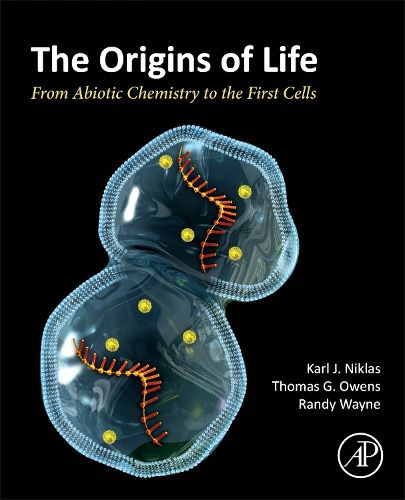Readings Newsletter
Become a Readings Member to make your shopping experience even easier.
Sign in or sign up for free!
You’re not far away from qualifying for FREE standard shipping within Australia
You’ve qualified for FREE standard shipping within Australia
The cart is loading…






The Origins of Life: From Abiotic Chemistry to the First Cells is an essential textbook that tackles one of the greatest mysteries in science, how inanimate matter evolved into the first living things. The book takes an interdisciplinary approach, delving into the basic principles of the earth's chemistry, the formation of pre-cellular entities, and the acquisition of chemical complexity. It explains the creation of chromosomes, metabolic pathways, and the features of the earliest prokaryotes. Users will find a detailed exposition of the World RNA Hypothesis in an accessible and easy-to-read style which is comprehensible for both science and non-science majors.
This textbook is a critical resource for upper-level undergraduate students in Cellular Biology, specifically those studying or researching evolution, cellular chemistry, and pre-biotic chemistry, as well as non-science majors in courses on the philosophy of science or related topics. It is also useful for professionals in biochemistry, evolutionary biology, and astrobiology who wish to understand the origins of life and first cells. Science communicators could use this interdisciplinary textbook for teaching and dissemination to broader audiences as well.
$9.00 standard shipping within Australia
FREE standard shipping within Australia for orders over $100.00
Express & International shipping calculated at checkout
The Origins of Life: From Abiotic Chemistry to the First Cells is an essential textbook that tackles one of the greatest mysteries in science, how inanimate matter evolved into the first living things. The book takes an interdisciplinary approach, delving into the basic principles of the earth's chemistry, the formation of pre-cellular entities, and the acquisition of chemical complexity. It explains the creation of chromosomes, metabolic pathways, and the features of the earliest prokaryotes. Users will find a detailed exposition of the World RNA Hypothesis in an accessible and easy-to-read style which is comprehensible for both science and non-science majors.
This textbook is a critical resource for upper-level undergraduate students in Cellular Biology, specifically those studying or researching evolution, cellular chemistry, and pre-biotic chemistry, as well as non-science majors in courses on the philosophy of science or related topics. It is also useful for professionals in biochemistry, evolutionary biology, and astrobiology who wish to understand the origins of life and first cells. Science communicators could use this interdisciplinary textbook for teaching and dissemination to broader audiences as well.